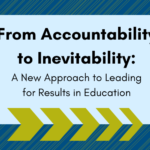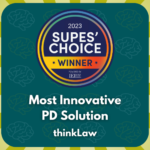“Use pictures.”
I’m in my first year of teaching eighth and ninth grade math in Washington, D.C. and I’m struggling to support our global population of students from El Salvador, Mexico, Eritrea, Ethiopia, Senegal, and a host of other countries who do not speak English as their first language and what advice do I get? “Use pictures.” A colleague of mine explained that the best you can do is throw in some visuals here and there to assist these students because it’s “not my job” to support these kids—it’s the ESL specialist’s job.
Fifteen years later, I’m sad to say that when it comes to supporting the needs of one of our nation’s fastest growing populations of students, the “Not My Job” mentality is one of the most significant threats to fulfilling the promise of all the tremendous assets our English Language Learners (ELL) bring to the table. To be clear, I am not scolding educators or saying they are shirking their ever-growing responsibilities. It’s just that between being the classroom teacher, child psychologist, data analyst, trauma-informed specialist, cheerleader-in-chief, and dozens of other unpaid, but necessary roles today’s educators are compelled to take on, effectively supporting English Learners can be a tall order.
Bring critical thinking opportunities to your school or district through thinkLaw’s “Pensamiento Crítico” professional development and curriculum to meet the needs of English Language Learners. Click here to get started.
But what if we stopped looking at ELL students as a specialist’s responsibility? By 2025, one out of every four students will be an English Language Learner. And if you serve students in California, Arizona, Florida, Texas, New York and Illinois, you’ve already reached this point. Yet, the “Not My Job” mentality is embedded in our culture and practices. Too often, only the specialists go to the professional development sessions on serving these students. Curriculum scaffolds for English Learners are limited at best. And this is why end up with general ed teachers walking around feeling like they support ELL students because they “use pictures.”
There are three shifts education leaders can make immediately to start changing the “Not My Job” mentality and creating intentional spaces where all ELL students reach their full potential: 1) Shifting to an asset-based framework; 2) integrating practical ELL instruction strategies professional development for all teachers; 3) and providing enhanced access to 21st century learning opportunities for ELL students.
From English Language Learners to Emerging Bilinguals: The “Why”
“I’m so mad I mastered two languages,” said no adult ever. Yet, we label students as English Language Learners, say they have Limited English Proficiency, or say they are learning English as a Second Language as if they are somehow deficient because of this. What if instead, we reframed the way we think about these remarkable students by calling them Emerging Bilinguals, as many leaders in this field have advocated for? To start with, this would do a great service in helping educators understand the tremendous assets Emerging Bilinguals bring to the table. They are literally the global citizens every multinational employer is begging schools and universities to produce. When we recognize the tremendous amount of talent these amazing students have, we create a strong “why” to motivate action for all educators.
Scaffolding Relevant ELL Strategies for All Teachers: The “How”
We know we can’t settle for a system where all the instructional expertise lies with the specialists. But it’s also not practical to require every teacher to go through the costly and time-intensive TESOL certification process. But what if instead, we scaffolded the most important instructional practices for teachers given their grade-level and content area? Science teachers focusing on relevant strategies for academic vocabulary acquisition, retention, and fluency. English teachers equipped with helpful, but increasingly rigorous sentence frames to help English Language Learners craft complex arguments. This would build up the general education teacher’s toolbox to the point where the specialist’s role is more of a consultant to teachers and families than a fixer.
Equitable Access to Critical Thinking Opportunities for ELL Students: The “What”
We know that infants come out of the womb endowed with critical thinking potential. We see the way babies use sounds (mostly screams) to communicate and advocate for their needs. So how did we get to a point where we allow ELLs to be systemically left out of opportunities to unleash their full potential? How is that a district in a border region can have an overwhelming majority of non-native English speaking teaching staff but only a fraction of English Language Learners identified for gifted and talented programs?
We need to stop looking at access to critical thinking as a luxury good. We know when we ground instruction in the 4 Cs—critical thinking, creativity, collaboration, and communication—we are teaching in line with best practices for academic language involvement for English Language Learners. These 21st century opportunities like STEAM classes, robotics clubs and mock trial give our ELL students ample and meaningful opportunities to speak, read, write and develop their comprehension skills with authentic engagement while learning how to think critically. They get the tremendous opportunity to bring their values and judgment systems from their unique experiences to the table as they critically analyze facts and defend their arguments. This isn’t just about equity, it’s about respect. Designing spaces where our ELL students’ voices are respected and nurtured.
Student Success is “Always My Job”
I only speak English and I never got a single special certification or took a course in supporting ELLs. But even if I did, I’ll never know all of the strategies and tools to support all of the students in my classroom. But what I do know is that all of the students in my classroom deserve everything I can do to unleash their full potential. That is “Always My Job.”
Check back later this week when we share more about one of our successful ELL partnerships with Mesa Public Schools in Arizona.








Leave a Reply